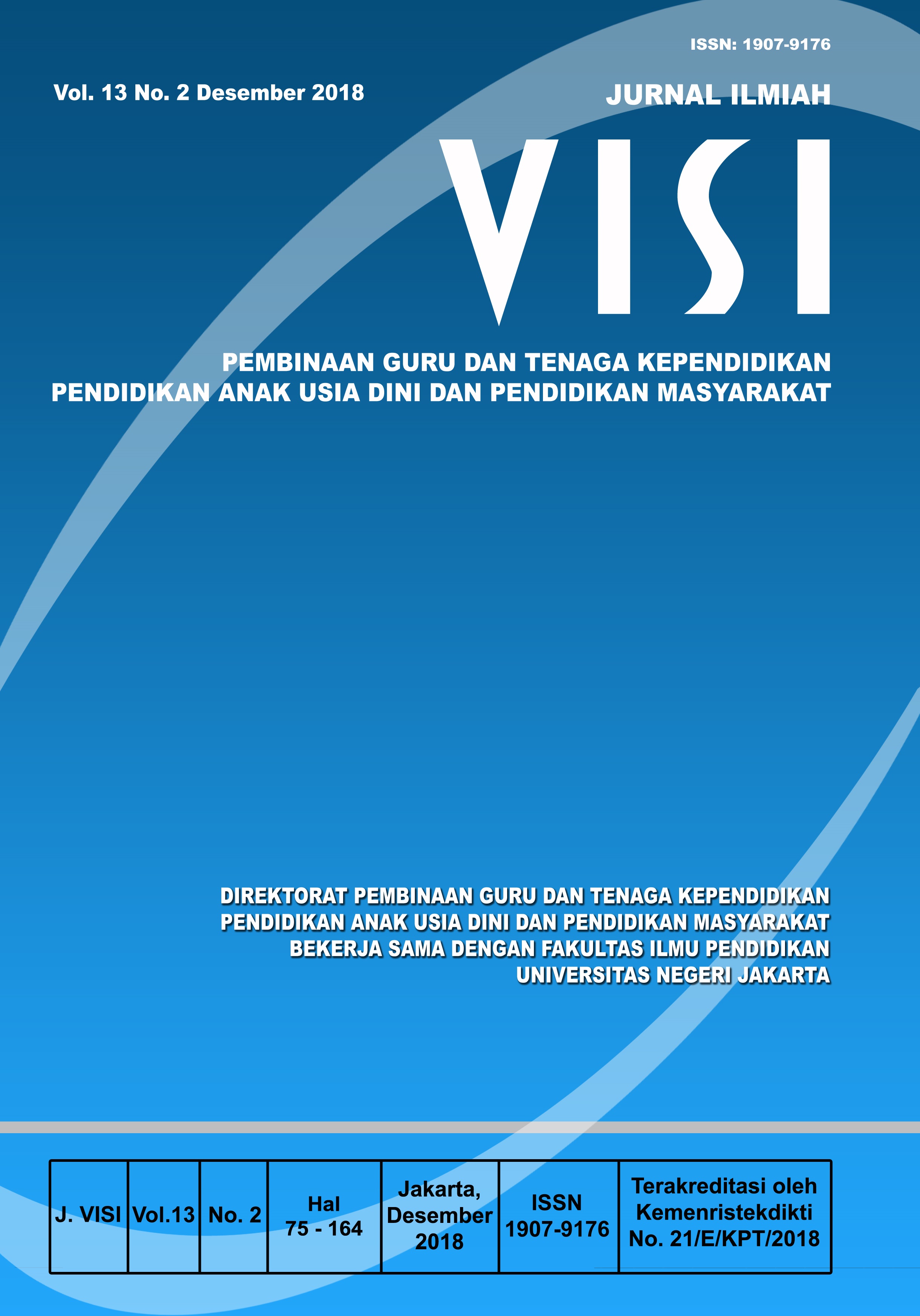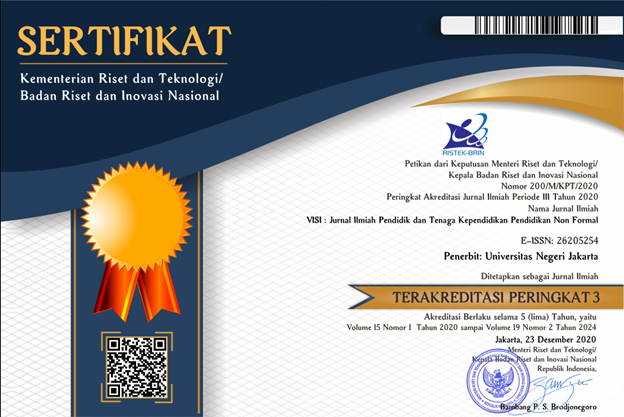KEMAMPUAN MEMBACA PERMULAAN ANAK TUNARUNGU USIA DINI
DOI:
https://doi.org/10.21009/JIV.1302.2Keywords:
children with hearing impairment, reading ability, exceptional schoolAbstract
The purpose of this article is to provide an overview of the ability to read early for children with hearing impairment in Extraordinary Kindergarten in DKI Jakarta. This research is motivated by the limitations of the language possessed by children with hearing impairment due to hearing difficulties they experience. Due to hearing impairments, children with hearing impairment does not experience the acquisition of language, so they experience various problems, one of which is learning to read. Characteristically children with hearing impairment use the visual senses in learning to read the beginning. Reading the beginning for deaf children begins with the process of identifying words through images and writing in the form of visualization. The research method used is a case study. This research was conducted at Pangudi Luhur Special School in March-April 2017. Based on the results of the research, the reading ability of children with hearing impairment is still low and the ability of nouns dominates in reading the beginning, so it needs to be optimized using special media specifically designed to read the beginning.
References
Allen, K. E., & Cowdery, G. E. (2009). The exceptional child: Inclusion in early childhood education. Clifton Park, NY: Thomson Delmar Learning.
Bunawan, L., & Yuwati, C.S. (2007). Pemerolehan bahasa tunarungu. Jakarta: Yayasan Santirama.
Chard, D. J., & Osborn, J. (2012). Phonics and word recognition instruction in early reading programs: Guideslines for accessibility. Diakses dari http://www.readingrockets.org/article/phonics-andword-recognition¬instruction-early-readingprograms-guidelines-accessibillity pada tanggal 24 Maret 2017
Choate, et all. (1992). Curriculum-bases assessment and programing. USA: Allyn and Bacon.
Endaswara, S. (2012). Metodologi penelitian kebudayaan. Yogyakarta: Gadjahmada University Press.
Santrock, J.W. (2008). Psikologi pendidikan. Jakarta: Kencana.
Tjoe, J.L. (2013). Peningkatan kemampuan membaca permulaan melalui pemanfaatan multimedia. Jurnal Pendidikan Usia Dini, 7(1), 17-48. https://media.neliti.com/media/publications/118623-ID-peningkatankemampuan-membaca-permulaan.pdf
Widuri, A. (2010). Kemampuan membaca pada anak tuna rungu di SLB-B Karnnamanohara Yogyakarta. Jurnal Mutiara Medika, 10(1), 29-36. http://journal.umy.ac.id/index.php/mm/article/view/1558
Winarsih, M. (2007). Intervensi dini bagi anak tunarungu dalam pemerolehan bahasa. Jakarta: Depdiknas Dirjen Dikti.
Winarsih, M. (2017). Membaca ideovisual untuk siswa tunarungu. Jurnal Perspektif Ilmu Pendidikan, 31(2), 130-133. doi: https://doi.org/10.21009/PIP.312.8
Published
How to Cite
Issue
Section
License
Authors who publish with this Journal agree to the following terms:
- Author retain copyright and grant the journal right of first publication with the work simultaneously licensed under a creative commons attribution licensethat allow others to share the work within an acknowledgement of the work’s authorship and initial publication of this journal.
- Authors are able to enter into separate, additional contractual arrangementfor the non-exclusive distribution of the journal’s published version of the work (e.g. acknowledgement of its initial publication in this journal).
- Authors are permitted and encouraged to post their work online(e.g. in institutional repositories or on their websites) prior to and during the submission process, as it can lead to productive exchanges, as well as earlier and greater citation of published works.
- Users/public use of this website will be licensed to CC BY-NC-SA Creative Commons Attribution-NonCommercial-ShareAlike 4.0 International License









